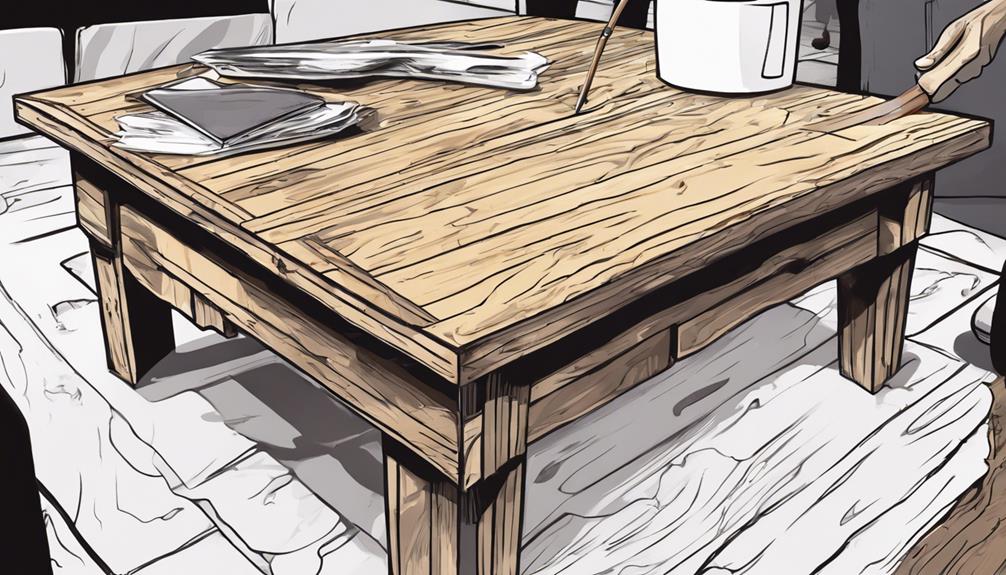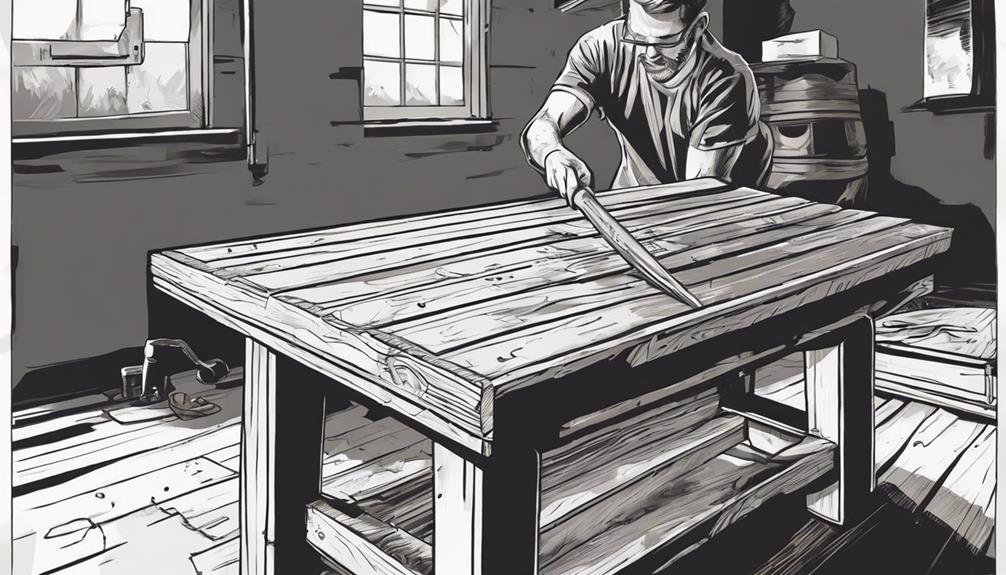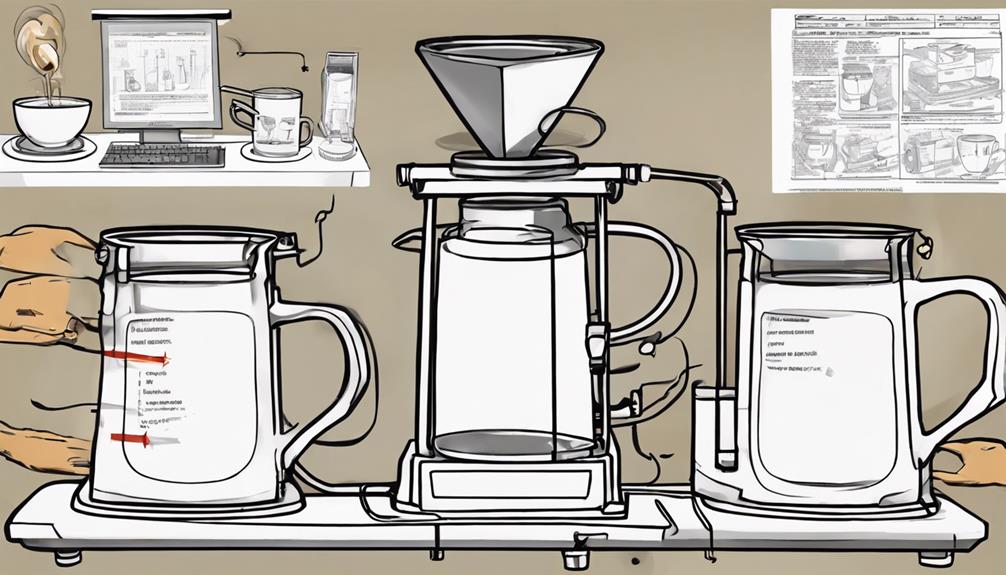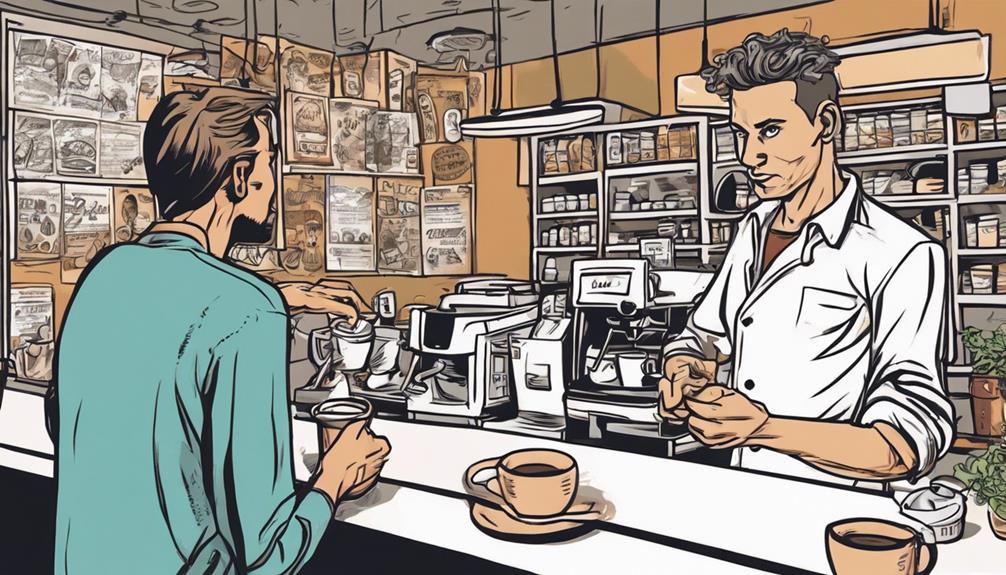Turn a pallet into a beautiful coffee table by following these steps. Begin by gathering two pallets and removing the top boards. Secure the boards back on, add legs, and then use an electric sander to smooth the surface. Attach the legs securely and sand for a sleek finish. Experiment with different stains and protect the table with varnish. Embrace any imperfections and reinforce the top pallet for added durability. Incorporate a magazine shelf for storage and consider matching the stain for a cohesive appearance. To create a centerpiece for your space, think about adding a glass top to protect delicate coffee mugs and simplify cleaning. This will also give the table a refined and elegant look. Once your stunning coffee table is finished, you can enjoy a stylish and practical piece of furniture in your home.
Key Takeaways
- Gather two shipping pallets and remove top boards.
- Reassemble boards securely, cut off excess frame, add legs.
- Sand pallet surfaces smooth with an electric sander.
- Experiment with different stain shades and apply varnish.
- Secure top pallet onto bottom, reinforce with screws.
Materials and Preparation
To start constructing a coffee table out of pallets, gather two wooden shipping pallets and carefully remove the top boards. The pallet wood from these boards will serve as the primary material for your project. Next, sand down the pallet wood to remove any rough edges or splinters. Then, measure and cut the wood to fit the desired dimensions of the coffee table. After that, you can begin assembling the pieces using wood glue and screws, making sure to reinforce the structure for stability. Once the table is fully assembled, you can add a coat of varnish or paint to finish the look. And finally, don’t forget to recycle any leftover pallets by safely packaging fragile items for shipping. If you’re looking for a more polished finish, you can also repurpose the pallet wood into a butcher block coffee table. To achieve this, simply arrange the pieces of wood in a tight grid pattern and secure them together with wood glue and clamps. Once the glue has dried, sand down the surface for a smooth and even finish. The end result is a stylish and functional butcher block coffee table that adds a touch of rustic charm to any living space.
Next, reassemble the boards on the pallet frame securely using screws. Make sure that the boards fit snugly to create a smooth surface for your coffee table.
Once the boards are in place, cut off any excess frame and add legs to the bottom pallet for stability and support. The legs will elevate the table to a comfortable height for everyday use.
Before moving on to the next steps, it's important to smooth out the rough pallet wood. Use an electric sander to sand down any rough edges or surfaces, creating a polished look for your coffee table. This step will also prepare the wood for staining.
With the pallet wood now prepped and ready, the stage is set for the next phases of the construction process.
Adding Legs and Sanding

Consider attaching legs of your preferred size securely to the bottom pallet to guarantee stability and support, and then utilize an electric sander to achieve a smooth finish on the pallet wood surfaces.
Begin by cutting the legs to the desired length, ensuring they're even for a balanced table. Securely attach them to the pallet's corners using screws or brackets, making sure they're level to prevent wobbling.
Once the legs are firmly in place, use the electric sander to smooth out any rough patches or splinters on the pallet wood. Start with a coarse grit sandpaper to remove imperfections and then switch to a finer grit for a polished look. Pay special attention to the edges and corners to prevent any sharp points.
Sanding the pallet won't only enhance its appearance but also make it safer to use. After sanding, wipe down the pallet with a damp cloth to remove any dust before proceeding to the next step.
Staining and Varnishing

Experiment with different stain shades to find the perfect color that complements your space.
When applying the clear varnish, make sure to protect the wood effectively.
Consider the natural characteristics of the pallet wood to achieve a cohesive and professional look.
Stain Shade Selection
Selecting the right stain shade for your pallet coffee table is vital in attaining the desired color and enhancing its natural beauty. When choosing a stain shade, it's important to experiment with different options to find the ideal hue that resonates with your style.
Take into consideration the undertones of the wood as they can greatly impact the final color result, improving the natural beauty of the pallets. To achieve a rich and deep coloration, make sure that the stain permeates the wood fully by following the manufacturer's instructions carefully.
Consistent application of the stain is key to prevent streaks or blotches on the pallet wood, creating a smooth and polished finish. Additionally, think about selecting a stain shade that complements your existing furniture or home decor to establish a cohesive look throughout your space.
Varnish Application Techniques
Applying a clear varnish to your pallet coffee table is crucial for safeguarding the wood and enhancing its inherent beauty.
When it comes to varnish application techniques, follow these tips for a professional finish:
- Preparation is Key: Before applying varnish, make sure the wood is clean, dry, and free of any dust or debris. This establishes the groundwork for a smooth and even application.
- Technique Matters: When applying varnish, use long, even strokes in the direction of the wood grain. This helps prevent streaks or bubbles, ensuring a flawless finish.
- Multiple Coats for Durability: Consider applying several thin coats of varnish instead of one thick coat. This not only boosts the protection but also leads to a more sturdy and long-lasting finish for your pallet coffee table.
Assembly and Final Touches

Securely attach the top pallet onto the bottom pallet to guarantee a stable and durable structure for your pallet coffee table. Consider reinforcing this connection by using screws to enhance stability. Embrace the rustic charm and unique imperfections of the finished pallet coffee table as part of its character. The magazine shelf not only adds functionality but also provides extra storage space for your living area. To achieve a cohesive look, match the stain of the pallet table to your existing furniture.
| Assembly and Final Touches | |
|---|---|
| Step 1 | Secure the top pallet onto the bottom pallet using wood glue. |
| Step 2 | Reinforce the connection by screwing the top and bottom pallets together. |
| Step 3 | Embrace the rustic charm and imperfections of the finished pallet coffee table. |
| Step 4 | Utilize the magazine shelf for added functionality and storage space. |
| Step 5 | Match the stain of the pallet table to existing furniture for a coordinated look. |
Community Feedback and Versatility

You'll love hearing about the versatile design options that the pallet coffee table project offers.
From personalization possibilities to engaging with the community, there's a lot to explore.
Get ready to express your creativity and create a unique piece that resonates with your style and needs.
Versatile Design Options
Exploring the diverse design possibilities of pallet coffee tables has garnered acclaim from the community for its adaptability and customizable features.
When building your own pallet coffee table, consider the following versatile design options:
- Convertible Functionality: Pallet coffee tables can be designed with additional features like storage compartments or extendable surfaces, allowing for multifunctional use in various spaces.
- Mix of Materials: Incorporating different materials such as glass, metal, or colorful paints alongside the pallet wood can create a modern or eclectic look, adding a unique touch to your table.
- Adjustable Dimensions: Customize the size, height, and shape of your pallet coffee table to fit perfectly in your space, whether you prefer a compact design for a cozy nook or a larger table for entertaining guests.
Personalization Possibilities
Amidst community feedback and the inherent versatility of pallet projects, individuals find ample opportunities for personalizing their pallet coffee tables to suit their unique preferences and style. When it comes to creating a coffee table from pallets for your living room, the ability to customize the design to align with your aesthetic vision is a major draw. Here are some personalization possibilities to ponder:
| Personalization Options | Description |
|---|---|
| Stain or Paint Finishes | Choose a stain or paint color that complements your living room decor for a cohesive look. |
| Add Decorative Accents | Incorporate elements like metal accents, stenciled designs, or even a glass top for flair. |
| Custom Dimensions | Tailor the size and shape of your coffee table to fit the specific layout of your living room. |
The personalization process not only allows you to express your creativity but also guarantees that your pallet coffee table becomes a standout piece in your living space.
Community Project Engagement
Engaging with the community has amplified the positive reception of the versatile and charming pallet coffee table project. The collaborative spirit surrounding this DIY endeavor has fostered a sense of camaraderie and shared creativity among participants.
Here's how the community project engagement has enhanced the wood finish coffee table project:
- Diverse Perspectives: Community feedback has brought forth a myriad of ideas on wood finishes, ranging from classic stains to innovative techniques like distressing and whitewashing. This diversity has inspired individuals to experiment with various finishes, adding a unique flair to their coffee tables.
- Skill Sharing: Participants have been actively sharing tips and tricks for achieving the perfect wood finish. This exchange of knowledge has empowered individuals, regardless of their prior experience, to confidently tackle the finishing aspect of the project.
- Encouraging Versatility: The community's engagement has encouraged individuals to step out of their comfort zones and explore unconventional wood finishes. This has resulted in a plethora of distinct coffee tables that showcase the beauty of experimentation and individuality.
Design Style: Modern Farmhouse

Modern farmhouse design effortlessly blends rustic charm with contemporary elements, creating a warm and inviting atmosphere in any space.
This farmhouse style incorporates a mix of old and new, combining elements like sliding barn doors, weathered wood, and vintage accents to achieve a cozy and lived-in look.
When it comes to modern farmhouse decor, the focus is on creating a comfortable ambiance by using reclaimed and upcycled materials such as pallet wood.
By incorporating pallet wood into your modern farmhouse design, you not only add a touch of authenticity but also contribute to sustainability.
The use of pallets in furniture like a coffee table can bring character and warmth to your space while staying true to the essence of farmhouse style.
Embrace the charm of modern farmhouse design by infusing your space with the rustic appeal and contemporary flair that this style effortlessly embodies.
Frequently Asked Questions
Can You Make a Table From Pallets?
Yes, you can definitely make a table from pallets! It's a creative and eco-friendly DIY project that doesn't require advanced skills. By repurposing pallets, you can craft a personalized and stylish coffee table for your home.
How Do You Make an Indoor Bar Out of Pallets?
To make an indoor bar out of pallets, measure, cut, sand, and stain pallet wood for a sleek look. Add shelving, a countertop, and a foot rail for comfort. Customize with hooks or bottle openers for flair.
Can You Make a Platform Bed Out of Pallets?
You can definitely make a platform bed out of pallets! Disassemble them, reuse the wood for the frame, and customize the design for a unique look. Adding legs and support will boost stability. Stain or paint for a cohesive style.
How to Make a Pallet Bed Easy?
To make a pallet bed easy, measure and cut pallets to desired size, sand rough edges, assemble pallets with screws, add legs for elevation, and stain or paint. This simple process creates a unique and functional bed for your space.
Conclusion
In the end, as you admire your new coffee table made from pallets, you'll see more than just a piece of furniture. It represents creativity, resourcefulness, and the beauty that can be found in repurposing materials.
Just like the pallets themselves, this project shows that with a little imagination and effort, you can transform something ordinary into something extraordinary.
So go ahead, enjoy your new coffee table and the story behind it.









